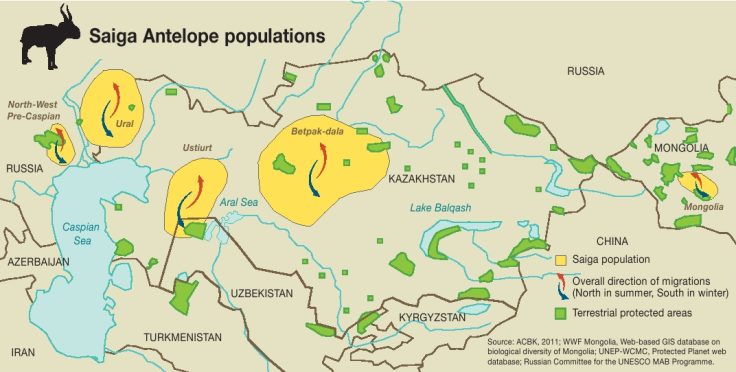Kazakhstan: Saiga antelope population shows signs of recovery after 2015 mass die-off

The population of saiga antelopes is slowly recovering in Kazakhstan after suffering from a dramatic collapse a year ago, scientists have said. In 2015, 200,000 animals from the critically endangered species died, prompting fears for their long-term survival.
Saiga antelopes are found in Eurasia – mostly in Kazakhstan, Mongolia and Russia. They have a distinctive bulbous nose and a cinnamon-coloured coat which turns white in the winter.
The species has been listed as "critically endangered" since 2008 on the IUCN red list of threatened species. However, a recent population survey suggests there might be cause for hope.
Population numbers going up
This massive die-off of antelopes in Kazakhstan had worsened an already dire situation.
The Betpak-Dala saiga population in central Kazakhstan lost almost 90% of its animals, which is equivalent to over 60% of the global population. So far, the causes of the deaths have not clearly been identified, but scientists believe a bacterial infection may be to blame.
In the spring, the Ministry of Agriculture of Kazakhstan launched a population survey to re-assess the exact numbers of saiga antelopes. The findings were a lot more positive than expected.
The aerial survey was conducted from 18 April to 3 May 2016 and revealed that saigas were recovering from the deaths of the 200,000 creatures. In total, 108,300 adult saigas were observed, most of them in the Ural region.

"This is far below the 242,000 animals we counted in spring 2015, before the mass-die off. But we are grateful for this glimpse of hope," says Albert Salemgareyev, co-leader of the Altyn Dala Conservation Initiative - a programme which works to protect northern steppe, semi desert and desert ecosystems.
Other causes of decline
If the situation is to really improve, threats to saiga antelopes must continue to be addressed. Poaching for horns - which are exported for the traditional Chinese medicine trade- habitat loss and severe winters have all contributed to the continuous decline of the animals.

Furthermore, selective hunting of young males and subsequent distortion of the sex ratio has affected reproduction, with recent research suggesting that this heavily skewed gender ratio is leading to reproductive collapse.
"The news about recovering saiga populations in Kazakhstan is a sign of hope after the catastrophic mass saiga die-off event in 2015," said Bradnee Chambers, Executive Secretary of the Convention on Migratory Species (CMS). "At the same time, poaching remains a serious threat to the species and we need to be aware of the fact that mass die-offs such as the one which shocked the world in 2015 can occur again".
© Copyright IBTimes 2025. All rights reserved.





















